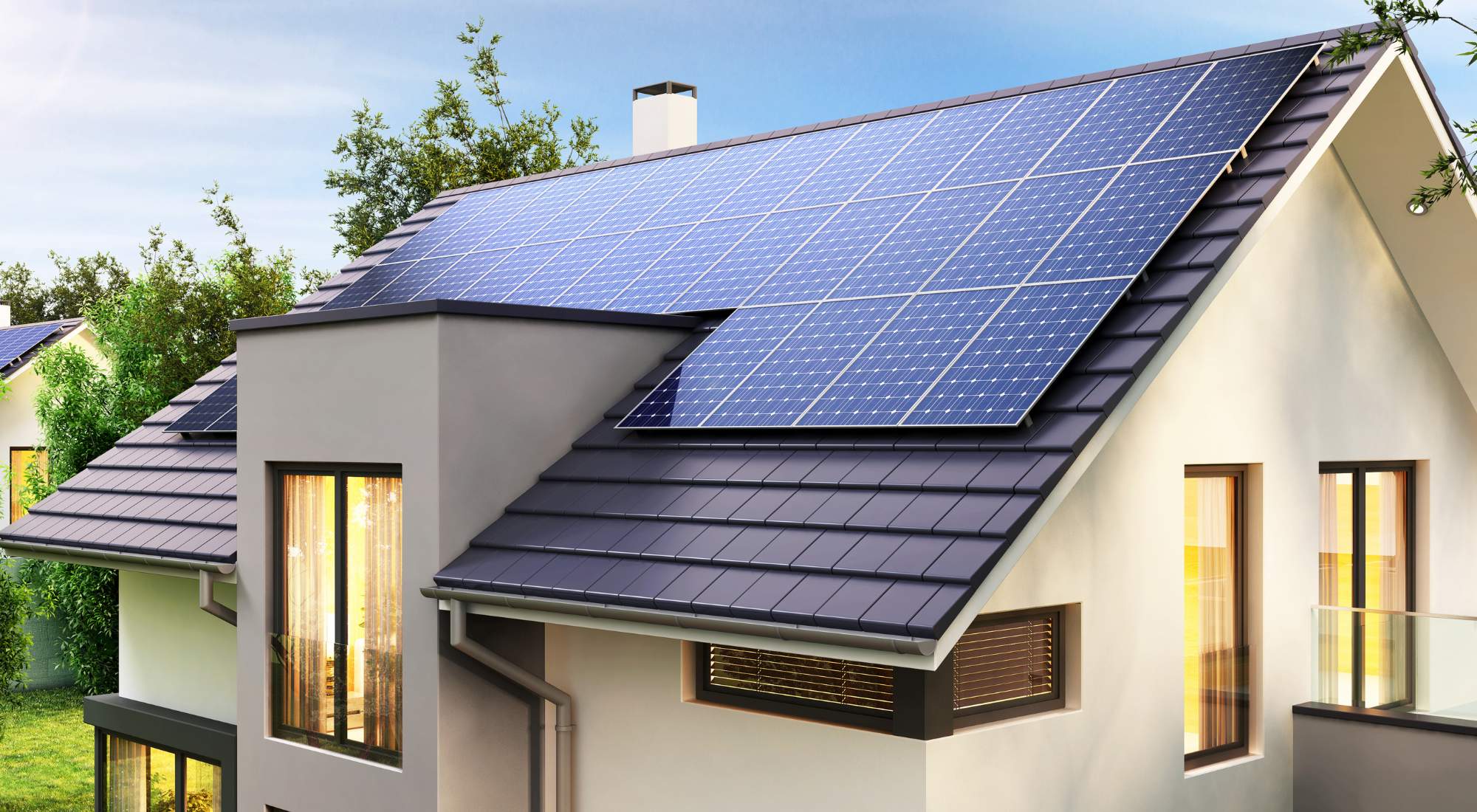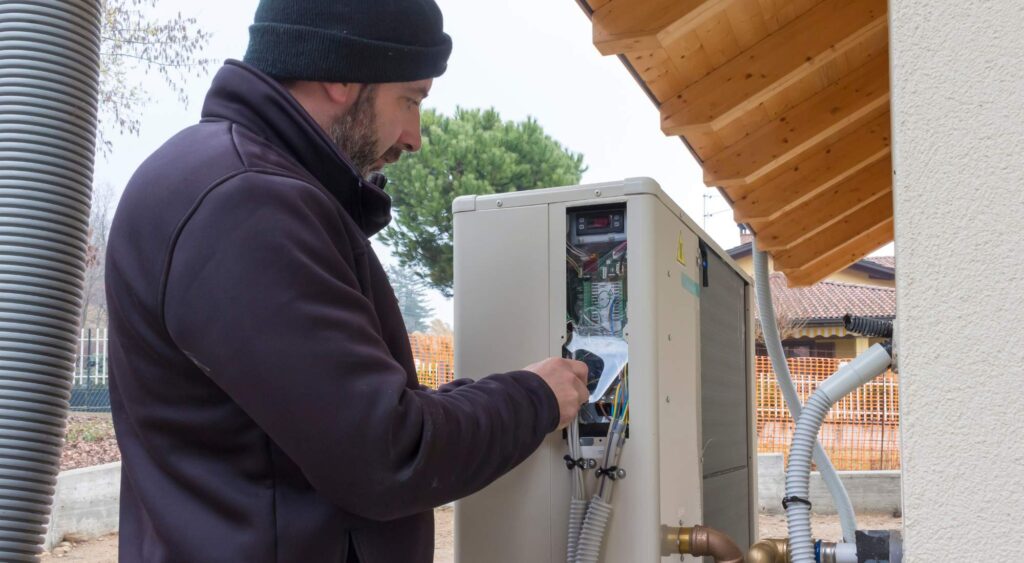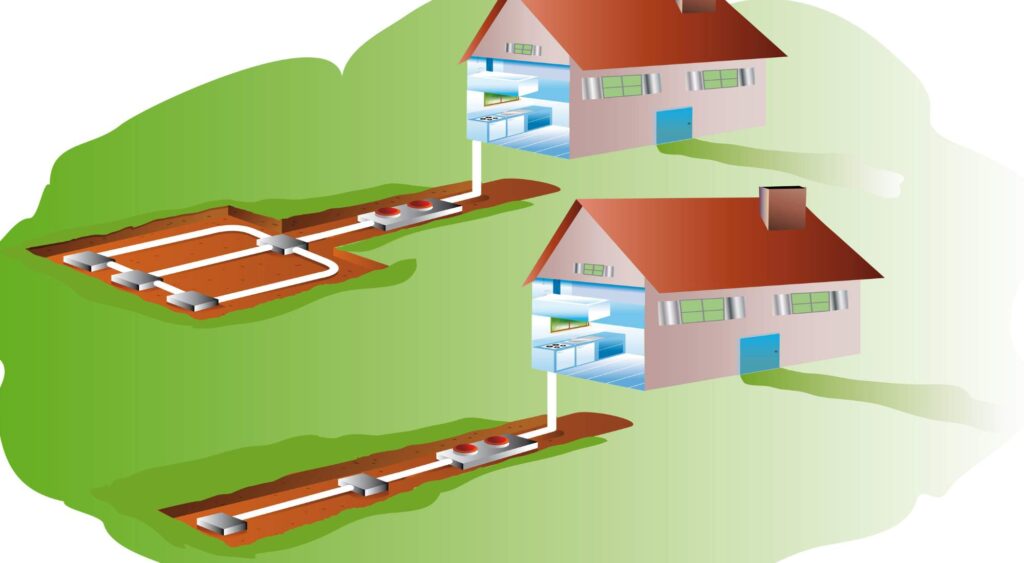
We could all use a little money back in our wallets — and today’s energy prices are definitely not helping at all. If you ask us, any option to reduce the monthly bill is something worth investigating.
What if we told you there was a way to save big money on energy, increase the value of your property, AND help your environmental footprint?
Geothermal has proven its worth, and many homes and businesses have already taken the plunge and recouped their installation costs. We’ll show you what you need to know about geothermal heating and cooling so you can get ready to take a bite out of your energy bill.
Table of Contents
- What Is Geothermal Heating and Cooling?
- Geothermal HVAC Pros and Cons
- 7 Pros of Geothermal Heating and Cooling
- 5 Cons of Geothermal Heating and Cooling
- AAA Heating and Cooling: Your HVAC Experts in the Portland Metro Area
What Is Geothermal Heating and Cooling?
Geothermal heating and cooling is a climate control system that uses the Earth’s naturally consistent underground temperatures.
Once you get to a certain depth underground — typically around 5-10 feet, depending on the location and landscape — the ambient temperature stays relatively constant in a range of about 40°F to 70°F.
To take advantage of this temperature difference between the air and the ground, a “ground loop” of pipes is placed underground, through which fluid is circulated.
A heat pump transfers heat to/from the ground loop — transferring heat from the building to the ground loop in the summer and from the ground into the building in the winter.
This type of system is very cost-efficient, environmentally friendly, and an increasingly popular choice for residential, commercial, and industrial applications.
Contact AAA Heating and Cooling today to request an appointment and learn how a geothermal system may be right for your home or business.
Geothermal HVAC Pros and Cons
Geothermal climate control has many benefits to the average homeowner but is not necessarily for everyone.
Like with many other major investments in your home, the feasibility and overall return on investment have to do with your unique scenario and priorities.
We’ll go over some pros and cons to consider before taking the leap into geothermal energy. If it’s right for you, the benefits can be amazing.
7 Pros of Geothermal Heating and Cooling
#1: Extremely Efficient
A ground source heat pump can operate at about 400% efficiency — moving about 4 units of heat for every 1 unit of electricity. Compare this to a traditional furnace burning oil or gas, with a typical efficiency of around 80%.
Geothermal systems also work more efficiently in the summer. Traditional HVAC systems are less efficient at expelling heat from a building when it is very hot outside. Cooling a building using a geothermal system takes advantage of relatively cool underground soil.
#2: High Monthly Savings
With geothermal heating and cooling being more efficient than other methods both in the winter and summer, there are significant ongoing energy savings.
You could save as much as 70% on your heating costs and 40% on your cooling costs compared to traditional systems.
The specific energy savings may be somewhat less for you, depending on your scenario:
- For example, rocky, dry, or sandy soils are less effective at transferring heat.
- Also, extreme climates can reduce system effectiveness. This is more of a problem with extremely cold temperatures, as the system may struggle to extract enough heat from the ground.
Regardless, the savings are quite dramatic and can have you recouping the cost of a new system in just a few years of normal operation. This return on investment can be further improved by rebates and other incentives offered by some utility companies and government programs.
#3: Long Lifespan With Little Maintenance Required
Geothermal heating and cooling systems have an incredibly long lifespan and lower maintenance needs than traditional HVAC systems. This further adds to the lower total cost of ownership of a geothermal system.
This long lifespan and low maintenance is due to the nature of the two key components of geothermal HVAC — the ground loop and the heat pump:
Ground Loop:
- They are made of high-density polyethylene, a very durable material.
- Buried deep, they are sheltered from the weather and the environment.
- You can expect this part of your geothermal system to last at least 50 years.
Heat Pump:
- A geothermal heat pump can be installed indoors, protected from the elements. Air-source heat pumps and A/C units must be installed outside, exposing them to weather and temperatures that increase wear and strain.
- In winter, external units can require defrost cycles, which adds wear to the system.
- You can expect a ground-source heat pump to last 20 to 25 years, with minimal maintenance costs required to maximize its lifespan.
#4: A Renewable and Environmentally-Friendly Energy Source
Geothermal energy is considered renewable because it uses the earth’s constant underground temperatures to create heating and cooling effects. There is no necessary depletion of natural resources in operating a geothermal system.
Traditional heating systems burn fossil fuels — a depleting resource — and also create polluting emissions.
Only about 20% of electricity generation in the United States is from renewable sources, so general electricity usage contributes to emissions and environmental impact. Geothermal systems are efficient at moving heat, requiring relatively little energy to operate — a very environmentally friendly way to control your home’s temperature.
#5: Not Weather-Dependent
Weather is another area where ground-source heat pumps have an advantage over their air-source counterparts:
- Air-source heat pumps are at the mercy of external air temperature, which fluctuates dramatically. When the air temperature is extremely hot or cold, this can significantly impact efficiency.
- Frost buildup on outdoor heat pump units requires them to run defrost cycles, which are energy-intensive. This further reduces system efficiency during the winter.
With both the ground loop and the heat pump shielded from the weather, a geothermal system is ready to provide you with reliable comfort year-round.
#6: Unobtrusive and Quiet
Once the installation process is complete, it’s hard to even notice you have a geothermal heating and cooling system.
There is no outdoor unit. No big A/C unit cranking on while you’re grilling in the backyard. No unsightly heat pump mounted to the exterior of your house. Nothing.
The indoor unit is very quiet. It doesn’t require a noisy compressor or fan like other systems do. If connected to your ventilation system, it will include a fan to circulate air across the heat exchanger coil and throughout your home; however, these typically operate quietly.
These qualities make geothermal systems a very attractive option for homeowners.
#7: Suitable for Almost Any Home or Business
There are some factors to consider, but overall, you will find that geothermal can work for almost any home or business. The most important decision is which type of geothermal system would be best:
- A system based on a Horizontal Loop makes a lot of sense on a property with a good amount of yard space. A typical home might need to lay down 1,200 to 1,800 feet of horizontal trenches.
- A vertical loop system is necessary if there is limited yard space. This is significantly more expensive to install than a horizontal loop because specialized drilling equipment, labor, and expertise are required.
- If you have a pond or other suitable water source available, a pond or lake loop may be your most cost-effective option. Sinking the piping below the water means no need for long trenches or deep holes.
Regardless of the size of your home or business, a geothermal system can scale accordingly. Larger systems, of course, require more upfront investment, but the energy savings will still generate excellent return on investment in just a few years.
5 Cons of Geothermal Heating and Cooling
#1: Higher Up-Front Costs
With a minimum cost of several thousands of dollars, the upfront cost of a geothermal system can be a hard pill to swallow. On top of that, if you don’t have the yard space, you’ll need thousands more for a vertical loop.
Although it will pay for itself within a few years, the high up-front cost might be a challenge for some.
If you are trying to reduce your energy costs and help the environment — but with less upfront cost — there are options. For Portland renewable energy options, you can contact AAA Heating and Cooling to learn about what might work for you.
#2: Retrofitting an Existing Home Can Be Challenging
The ideal situation for a geothermal installation is with a new construction home, where excavating the property and integrating into the HVAC system is more convenient and less expensive.
For an existing home, it can be a little challenging:
- Any existing landscaping will be eliminated during the installation process.
- Making adjustments to the existing HVAC system often includes added complexities and costs.
That said, retrofit is generally possible. Contact AAA Heating and Cooling for an appointment with an expert who can look at your property and help you plan a retrofit.
#3: Underground System Repairs Can Be Costly
Ground loops are very durable, but damage is possible. Tree roots or shifting soil can be a hazard, especially for horizontal loops.
If there is a failure in the ground loop, excavation and repair could be a major expense.
Your best protection against this is to use a reputable installer known for their expertise and high-quality work.
#4: Installation May Disrupt Your Landscaping
With a horizontal loop system, you will need a lot of space for the piping. To give you an idea of how much needs to be dug up to lay a horizontal loop, here is one way to estimate it:
Square footage of home x 2.5 = Square footage of ground loop field
A vertical loop system does not need much horizontal space, but you’ll need to bring in drilling equipment to bore the holes. That heavy machinery will likely do some damage to your landscaping.
If you are fortunate enough to be a candidate for a pond or lake loop, you may avoid a big mess. This kind of geothermal system is generally the least disruptive to install.
#5: Requires Skilled and Knowledgeable Installers
It takes a lot of expertise and specialized equipment to properly install a geothermal system — this is NOT a DIY-friendly endeavor. It might take some time to find the right geothermal system installer and even more time to wait for their availability.
Is Geothermal Heating and Cooling Worth It?
When you consider the long-term energy savings, positive environmental impact, and increase in property value, a geothermal system is generally worth it.
The initial cost may be high, but a quality installation provides reliable and low-maintenance comfort all year, recouping your costs within a few years.
AAA Heating and Cooling: Your HVAC Experts in the Portland Metro Area
The skilled team at AAA Heating and Cooling can install many types of HVAC systems, and we are well-versed in the various codes and regulations involved in geothermal systems.
Our mission is to provide our clients with reliable and high-quality HVAC products and services. We take the time to understand the needs of our clients, and we’ve been doing it since 1961. Let’s get your geothermal project started. Contact us today to request an appointment.



